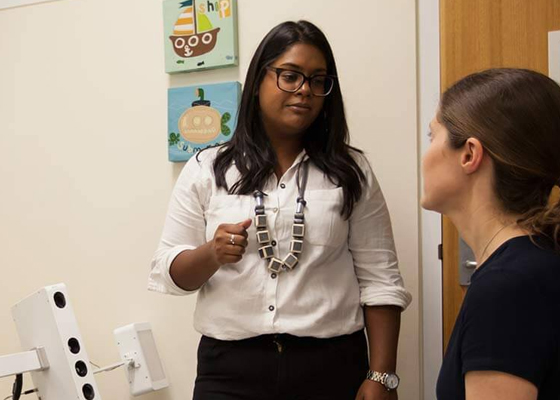Researchers
Our research is structured into research themes, programs of work and teams. We are committed to collaboration and to work together.

Research theme leaders

BA (Education) PhD Candidate
Director of First Nations Strategy and Leadership; Head, First Nations Health and Equity Research

BSc PhD
Head, Chronic Diseases Research

OAM BSc (Hons) GradDipClinEpi PhD

BSc (Hons) PhD
Head, Brain and Behaviour Research

BSc (Hons) MSc PhD
Feilman Fellow; Head, Precision Health Research and Head, Computational Biology

BMedSci (hons), PhD
Shaping excellence
Rewarding excellence
Learn more about how The Kids rewards research excellence
Learn more about how The Kids rewards research excellenceResearch governance
We pride ourselves on conducting research to the highest standards possible
Find out more about research governanceCurrent career opportunities
Want to join our team and help make a difference to child health?
Learn more about Current career opportunitiesHelp shape our research
Find out how you can involve consumers and the community in your research
Help shape our researchReports & findings
Medication Use in Type 1 Diabetes and the Association with Socioeconomic Disadvantage: Analysis of a National Linked Dataset
To explore trends in the receipt of commonly prescribed medications (beyond insulin) in people with type 1 diabetes in Australia, including polypharmacy, and to investigate socioeconomic disparities across these trends.
Nudging towards COVID-19 and influenza vaccination in children with medically at-risk conditions
Non-coercive 'nudge' interventions have shown the potential to promote health behaviours. This study aimed to evaluate the impact of nudge interventions on COVID-19/influenza vaccine uptake among children with medically at-risk conditions.
Modelling Micro-Elimination: Third-Trimester Tenofovir Prophylaxis for Perinatal Transmission of Hepatitis B in the Remote Dolpa District of Nepal
Hepatitis B (HBV) prevalence is very high in pregnant women in the Dolpa district of Nepal, a region characterised by a remote geographic landscape and low vaccination coverage. Using mathematical modelling, we evaluated the impact of third-trimester tenofovir disoproxil fumarate (TDF) prophylaxis on HBV burden and estimated the time required to achieve HBV elimination in Dolpa.
Experiences and Recognition of Intimate Partner Violence among a Community-Sample of LGBTIQA + People in Western Australia
LGBTIQA + people experience intimate partner violence (IPV) at higher rates than non-LGBTIQA + people but under-utilize professional support services, and the reasons for this are poorly understood. This study examined IPV experiences, recognition of IPV, service utilization, and support needs among a self-selected sample of 523 LGBTIQA + adults in Western Australia.
